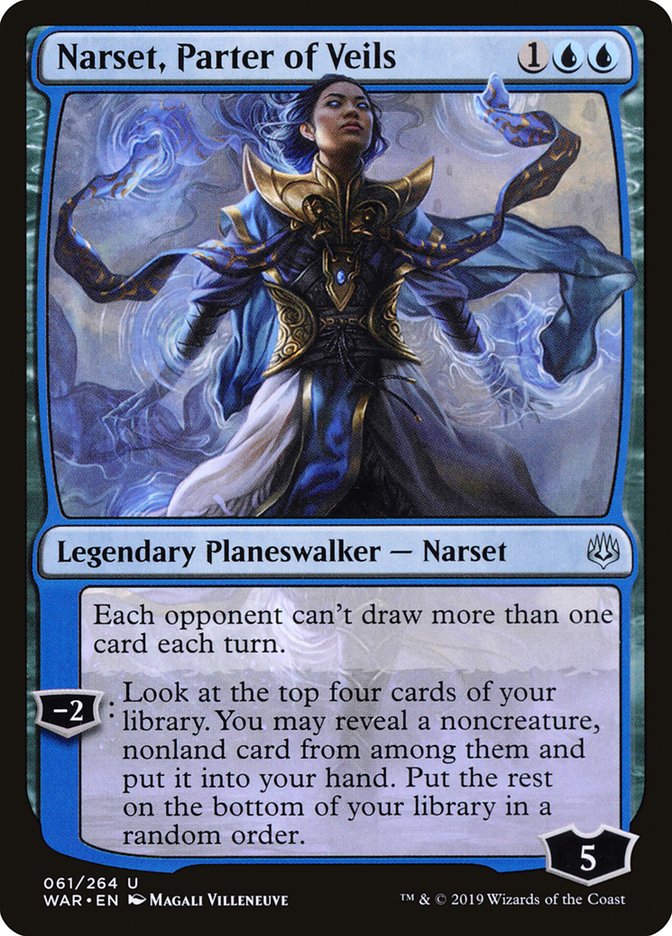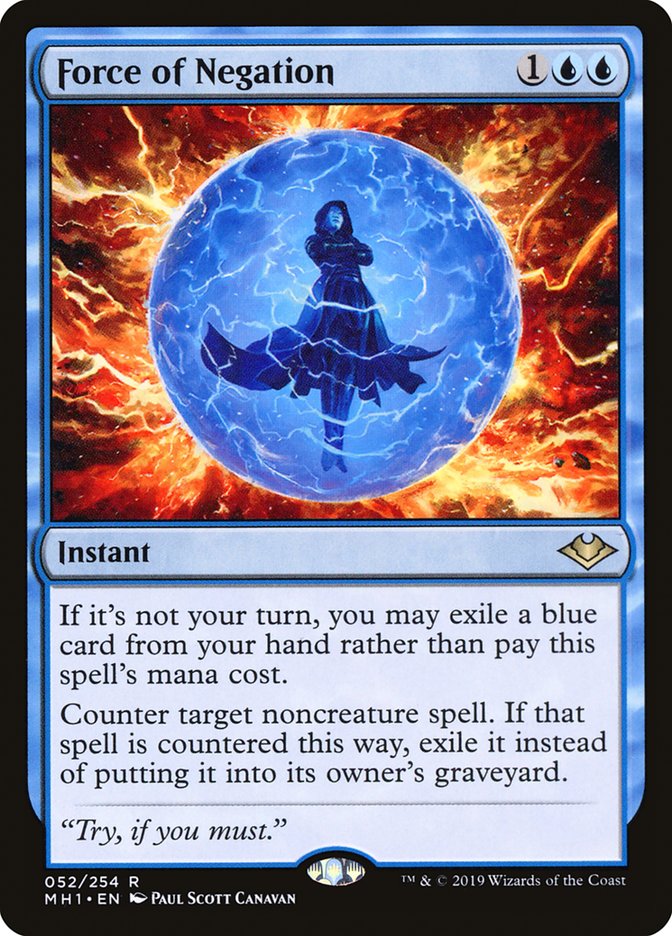I had an absolute blast at SCG CON Summer last weekend. Most tournaments I play in require an entire weekend of focus, as I often find myself battling until the very last round. I do not mean this as a brag, because my finishes are historically modest. My Day 2 conversation rate in premier events is absurdly high, resulting in many minimum cashes and a weekend of hard-fought matches. Last weekend in Roanoke had a much different feel from my usual.
After swiftly going 0-3, I dropped from the tournament before I could unleash my Azorius Control deck against my foes in the Season One Invitational. I wasn’t confident that I could win the last five in a row and I found this to be an opportunity to hang out for once. I immediately jumped into some side events, battling in Standard and Modern Challenges during my entire three-day stay. Beside winning a good amount of booster packs, I was able to let loose and shoot the breeze with players that I wouldn’t normally interact with.
I always knew there was a population of players that attended big events for the sole purpose of gaming on the side; however, my time is always monopolized by the big show to notice. Although my purpose in the competitive world is to go for maximum glory, I can now see the appeal to the gathering that occurs at an event like this one. I don’t plan on having three full days of side events again, so I immediately assessed the cause of my poor tournament performance.
Planeswalkers (11)
Lands (26)
Spells (23)

Unlike the rest of the reasonable world, I was unwilling to remove Absorb completely from my maindeck of Esper Control. The version above is with the updates, dropping quite a few stinkers against the current metagame. Even though I knew it had gotten worse, it wasn’t bad enough for me to drop to zero copies. I left two in, hoping to keep my countermagic suite at a high enough number to be able to compete in the mirror if that scenario occurred. As expected, those two Absorbs popped up at the worst times against decks that had Teferi, Time Raveler running circles around me.
Teferi, Time Raveler was an easy called shot for me when it was previewed, and I knew it would cause a problem for my style of deck once it caught on. After a slow start, it has dominated the field as an easy four-of in multiple archetypes. One of my mistakes was to underestimate the ability for it to resolve through Thought Erasure, Duress, and Dovin’s Veto, thinking I could easily prevent disaster with so many early answers. I need to practice what I preach, as I have always sounded the alarm of threat over answer.
Having access to answers is important for control’s success, but the threat is just too powerful in this instance. Having a Teferi, Time Raveler resolve completely blanks a large portion of Esper Control’s draws, making countermagic a giant liability that we just cannot afford. I have seen versions with no counterspells just to avoid this situation. I don’t think that this extreme is the right course of action, as Dovin’s Veto is too good of a card not to employ, but they are on to something. Absorb is clearly not usable in this day and age, which led me to worry about matchups that used to depend on it.
Mono-Red Aggro is easily defeated by Esper Control without Absorb, making the decision to remove them all an easy one. I loved my build with four Narset, Parter of Veils, which begged for a more tap-out control setup. It doesn’t take much for me to get on the tap-out train, as it is easily my most comfortable playstyle in Standard. Cranking up the Teferi, Time Raveler and Oath of Kaya count has helped keep Mono-Red Aggro an easy matchup, while giving me more answers to smaller planeswalkers that drop to a low loyalty count. With all these changes to Esper Control, it can now compete in this new Standard that is bloated with cheap planeswalkers. Unfortunately, I think that Esper Superheroes is the best choice by a mile.
Creatures (8)
Planeswalkers (12)
- 4 Teferi, Hero of Dominaria
- 1 Liliana, Dreadhorde General
- 4 Teferi, Time Raveler
- 3 Narset, Parter of Veils
Lands (26)
Spells (14)
- 1 Cast Down
- 4 Thought Erasure
- 1 The Elderspell
- 3 Oath of Kaya
- 3 Tyrant's Scorn
- 1 Command the Dreadhorde
- 1 Despark
Sideboard

In my last column, I suggested that any Invitational-bound competitor should choose Esper Superheroes as their weapon of choice for a multitude of reasons. It borrows the most powerful spells from Esper Control but adds early pressure. This makes all the difference in Standard, with early pressure being required to assault planeswalkers on Turn 3. Hero of Precinct One is the best way to start a game off, having natural protection against Teferi, Time Raveler while on the play. To top off the early pressure advantage, Esper Superheroes pulls the card and life advantage from Basilica Bell-Haunt to seal away the previously poor matchup against aggressive decks.
The amount of lifegain from the creatures, Oath of Kaya, and Teferi, Time Raveler rebuys makes Esper Superheroes the weapon of choice against all decks in the format. There is no truly bad matchup for this midrange juggernaut, as it has all the maindeck tools to defeat the fastest and slowest decks in the format. Esper Control may give it a run for its money, but the weaknesses of the best control deck keep it held down.
I had both decks ready to go last weekend, but my control roots snared me well. I didn’t realize with my online testing that Esper Control is the only deck in the format where everything must go perfectly right to win matches. When Esper Control wins, it destroys the competition with perfect answers to precise threats. This feels great when we draw all our blue cards against an enemy midrange planeswalker deck or the mirror. I have the feeling of a champion as I rain blows up my opponents, countering all their spells with my own planeswalkers cheering me on from the battlefield. Sometimes my Mono-White Aggro opponents eat every Cast Down, Kaya’s Wrath, and watch helplessly as Teferi, Hero of Dominaria resolves on an empty battlefield.
When sequencing like this occurs, Esper Control had an unstoppable feeling, but that is not the reality.
In practice, Esper Control draws a mix of answers to the popular threats across the format. This results in luck of the draw, where your spells must match those of the opponent. When this doesn’t occur, Esper Control gets embarrassed and a swift 0-3 occurs. No other deck in the format suffers from this curse. Each other Tier 1 deck has spells and creatures that cover an array of needs. Most of these decks apply pressure in one way or another, with a robust end-game in mind. The aggro decks of the format have powerful four-mana spells, while the midrange decks Command the Dreadhorde when resources have clashed in the prior turns. Green decks have an abundance of mana creatures early that can seem narrow, but even those little things can attack down planeswalkers and life totals effectively. Esper Control doesn’t have that type of technology, making it not my number one choice moving forward.
Creatures (8)
Lands (17)
Spells (35)

My Modern suggestion was very close to Dan Jessup’s version of Izzet Phoenix. I still think that this is the most consistent deck in Modern that provides experienced users with bonus percentage points in the victory column. With that being said, I’m not sure how it will fare against the new Hogaak, Arisen Necropolis wave that has rocked the format with another broken graveyard-based deck.
It’s tough for me not to rant about Stoneforge Mystic in these types of situations, but I will fight the temptation. Once we get past the next Mythic Championship in Barcelona, we can revisit the topic of Batterskull’s best friend getting into the Modern lineup. At this point in the format, it may be time to lean heavily on a deck that can win early or has access to Rest in Peace.
Surgical Extraction alone is not going to cut it against these new Bridgevine decks. Since some decks do not have access to premier graveyard hate, I expect most nonwhite decks to try to combat Hogaak with it. This could mean that Izzet Phoenix will suffer from this splash hate as it did before, making it less of a potent strategy moving forward. The reason why it was such a great choice for the Invitational is because of the resurgence of Humans.
I can’t see how Humans can combat Bridgevine on a consistent basis. The ability for this deck to combo by Turn 3, or at least fill the battlefield with enough power to halt creatures on the other side, makes linear creature decks not the best choice moving forward. Hogaak Bridgevine was forged out of Modern Horizons, which makes the folks at headquarters really sweat. I’m not sure if it’ll dominate the Mythic Championship in Barcelona, but I do know the developers didn’t want to bolster this nonsense strategy.
Creatures (5)
Planeswalkers (7)
Lands (25)
Spells (23)

It may sound odd to suggest this, but Azorius Control may be best-suited to handle repulsive decks like these if they begin to dominate. Although the clock Azorius Control puts on is embarrassing, the hate cards strike fear for those artifact and graveyard fans out there. I would fully support a third copy of Rest in Peace in the sideboard if this deck continues to dominate on Magic Online. Rest in Peace is miles ahead of the genre competition, making winning a distant dream for those attacking us from an unfair angle.
I couldn’t compete in the Modern rounds last weekend; however, I am very confident in my build of Azorius Control. I posted the best-performing list, which is very similar to what I was working with. Brandon Dollaway has helped me fine tune this ancient archetype in a world full of War of the Spark addons. He counseled me away from Teferi, Time Raveler, as it only performed well in the mirror and a few niche spots that rarely come up. Often, it became a frustrating Unsummon that ate a few points of damage on Turn 3. I was better off with a Narset, Parter of Veils on Turn 3, which always demands an answer and provides a quality card.
Outside of that change, there are a few other substitutions I would make to this list by Nick Moore. The Surgical Extractions in the maindeck made sense for the weekend, but I am unsure moving forward. I do not think it’s enough to make a huge impact on those decks that abuse the graveyard mechanic and it’s a harmful draw against a large percentage of the field that could care less about their graveyard.
The rest of the maindeck is good, with a few flex slots taken by Hieroglyphic Illumination and the 25th land. I will add Force of Negation over Dovin’s Veto to test out, as I think the free mode is much better than the uncounterable trait of the other. This will also require Wrath of God to become Supreme Verdict, giving us maximum equity for our blue spells. This may hurt us against Humans, but I expect to see a drop in that archetype if Bridgevine is around.
Force of Negation may be the key to this deck’s success against unfair decks of the format, but Rest in Peace is our savior against the scariest one of them all.






